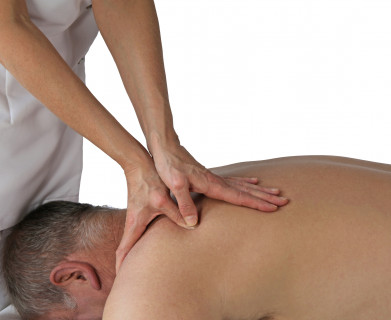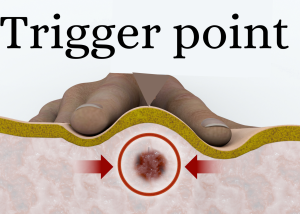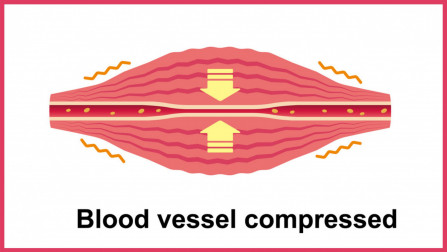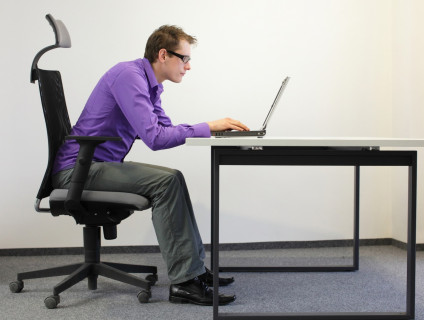How to treat trigger points at home
Trigger points can be a painful and sometimes debilitating condition that often require courses of therapy that can be painful, invasive... Read Article

Muscles knots can make you feel stiff and tired, plus cause a host of muscular aches and pains. However, a lot of advice and treatments are not that accurate or helpful, so people still suffer and the problems keep coming back. So, in this article we will give you a concise but scientifically correct summary of:
Plus, we will also show you where you can get further quality information.
Muscle knots are actually a part of your muscle that has spasmed or tightened, bunching up to form the lump. This will cause:

Of course there is no actual knot in the muscle so the correct name of these lumps is (myofascial) trigger points.
Parts of muscles can suffer from scar tissue, adhesions and inflammation. However, despite what you read these issues are normally not part of a muscle knot.
As mentioned muscle knots can cause stiffness, tiredness plus a host of muscular aches and pains. One reason for such a wide range of symptoms is that muscle knots can shoot pain well away from the actual lump. Scientists have mapped much of this, as shown in the following diagrams.
Muscle knots do not show up in any medical scans or laboratory tests (so medical doctors usually don’t find or diagnose them). They can only be found and diagnosed by a properly trained professional physically examining the muscles, looking for the tightness, lump, tenderness and shooting pain.
You may read lists of things that cause muscle knots, However, the two main underlying causes are:

Most causes of muscles knots involve tightened muscles. The reason for this is that:

Sitting at a desk can often cause your muscles to be tight for long periods of time. Because of this office workers often develop muscle knots in their neck and shoulder muscles.
Emotional stress and tension can cause muscles around the head and neck to tighten. The muscle knots these cause are a major cause of headaches.
As discussed above muscle knots themselves cause muscles to tighten and restrict blood flow, but these are also the major causes of muscle knots. Therefore, once you have muscle knots they create the perfect environment to keep growing and for more to develop. This is why once you have them they almost never go away on their own, and why they keep coming back after being treated. Later in this article we will show you how to overcome this to successfully get rid of them.
There are a number of things you can do to help prevent muscle knots. These all involve minimising or eliminating the two main underlying causes. Let’s look at some examples.
As we have seen existing muscle knots cause muscles to tighten and restrict blood flow, which cause more muscle knots to develop and the existing ones to worsen. Later in this article we will show you the best way to treat them.
Emotional tension and stress and be a significant cause of muscle knots, especially in the head and neck muscles. As an example, during the exam period in Chiropractic College fellow students sought regular treatments. This is not our area of expertise, so if this is a concern we advise that you seek appropriate advice.
Issues with your spine and posture are a very common cause of muscles to be abnormally tight. For more information about this and what to do please see this article
Causes of muscle knots can easily be minimised, but it is practically impossible top eliminate them altogether. Therefore it is great to do some ongoing muscle care to keep them from tightening and to keep an excellent blood flow. To do this we recommend:
If you have had treatment for muscle knots before you will understand that:
What will do here is give you your best treatment option, plus a strategy to help stop them coming back.
The key to treating muscle knots is to relax the tightened muscle and increase the blood flow. There are many treatments that can do this.
The reason muscle knots seem to always come back is that they never really go. It is only the pain that goes, giving the illusion that the knots themselves are gone. What happens is muscle knots usually start small then slowly grow. Eventually when they get large enough so when something aggravates them and they start causing pain. Most treatments merely reduce their size and stop them hurting. As we have also seen, once you have muscle knots they cause muscle tightening and reduce blood flow, creating the ideal environment for the knots to re-develop.
An example showing that most treatments usually do not rid muscle knots
In a a trial of treaments for shoulder pain after 12 very thorough treatment sessions the pain was largely gone, but 2/3 of the muscle knots were still there. This means that whether you use a trigger point release from YouTube or a course of needle or laser treatments you will still have most of your muscle knots. Keep reading and we will show you how to overcome this.
The basic strategy to rid yourself of muscle knots is very simple. In the example above, while 2/3 of the muscle knots were still there after the 12 thorough treatment sessions, all of the knots had reduced in size and 1/3 were gone. Therefore, the way to get rid of muscle knots is to:
In out article What is the best treatment for trigger points we discuss that the only practical solution that effectively settles muscle knots down and can be repeatedly applied is self applied vibration massage (not massage guns). For how to do this please see How to release trigger points yourself .
For a complete description of how to treat a muscle knot yourself please see our article How to release trigger points yourself . Remember, “trigger point” is the technical name for a muscle knot.
In this section we will link to resources to help you with muscle knots for various conditions. These will use the technical term “trigger points’, but you know its the same thing.
Shoulder pain
Fibromyalgia
Headaches and migraines
Tennis elbow
Back pain
Calf pain

DrGraeme massagers were originally built by Dr Graeme for use in his clinic, and to prescribe to his patients for additional self use at home. Now these are used by colleagues and other professionals for similar purposes. If you are a professional and wish to know more about this therapy, or possibly get a sample massager to trial please check out our practitioner page .
We are continually adding more information on research and uses. Subscribe below to have us email them to you "hot off the press".

Several years ago Dr Graeme, a Chiropractor practicing in Victoria, Australia was looking for a serious hand held massager his patients could use at home to get the extra quality massage they needed. The ones he found in the shops and on-line for home use looked nice but were not serious, and... read more
Trigger points can be a painful and sometimes debilitating condition that often require courses of therapy that can be painful, invasive... Read Article
Muscles knots can make you feel stiff and tired, plus cause a host of muscular aches and pains. However, a lot of advice and treatments... Read Article
As a chiropractor for over 27 years vertebral subluxation complexes are a very real problem that can cause pain, long term spinal damage... Read Article
The main reasons trigger points keep coming back is because courses of trigger point therapy are only designed to temporarily relieve... Read Article
If you’ve got a headache it would be nice if you do some massage or press pressure points rather than rely on drugs or other therapies. ... Read Article
Sports massages are widely used with both professional (paid) and self help options. If you are looking at sports massages the main... Read Article
Do not refresh or leave this page until loading complete.